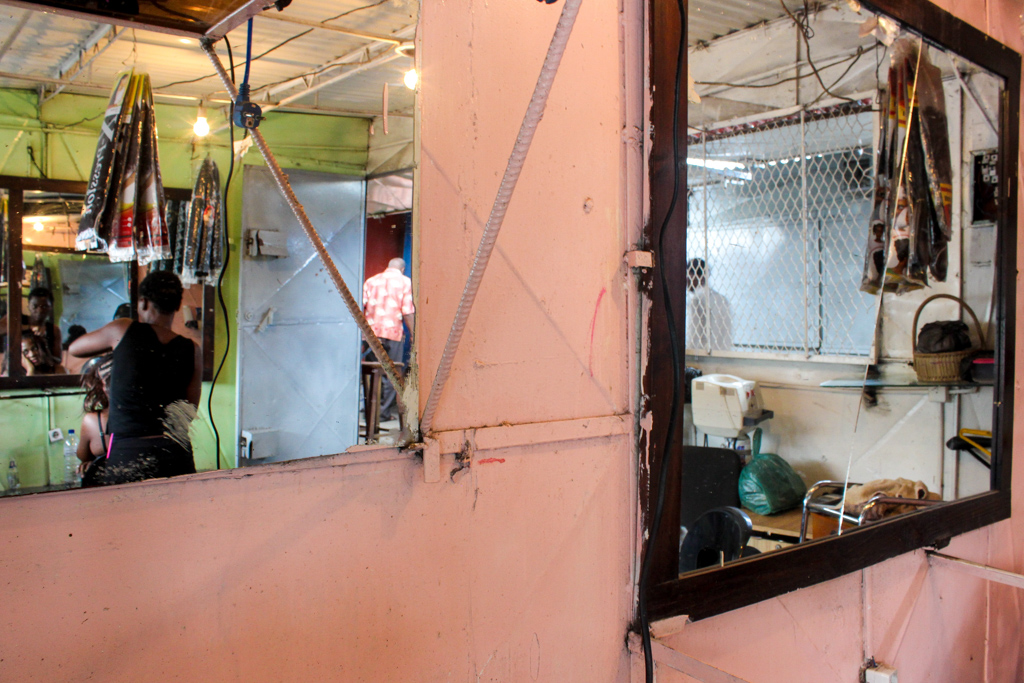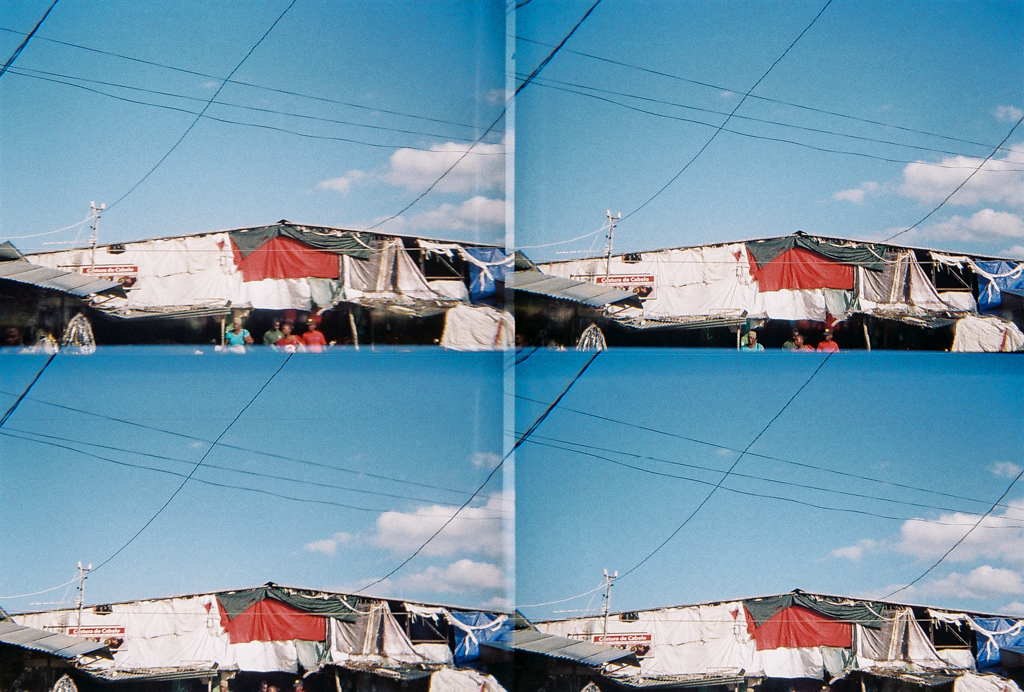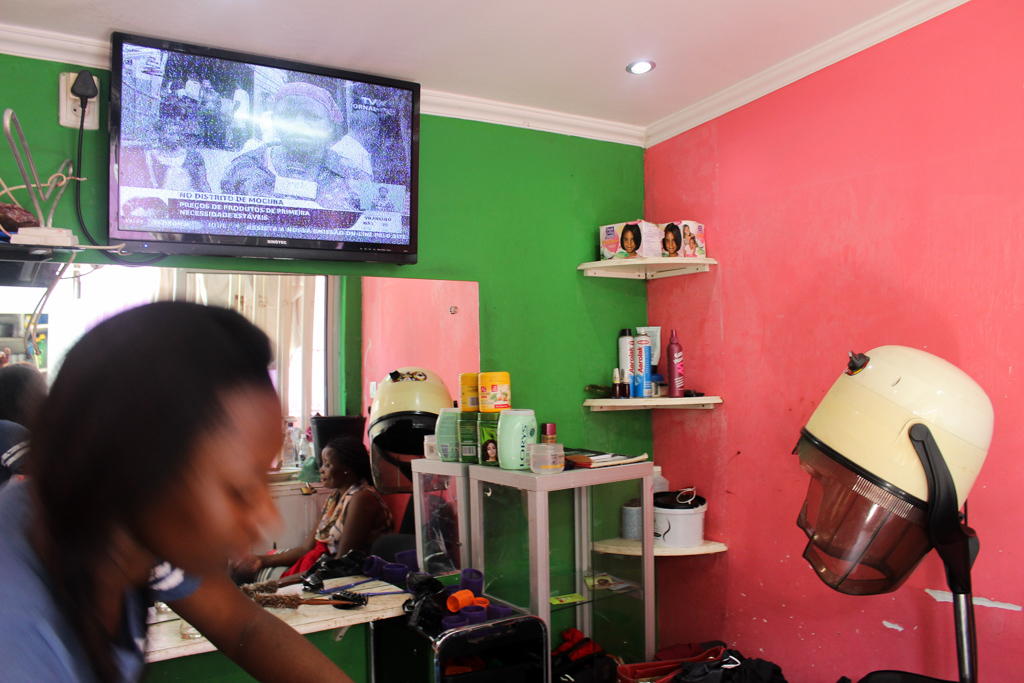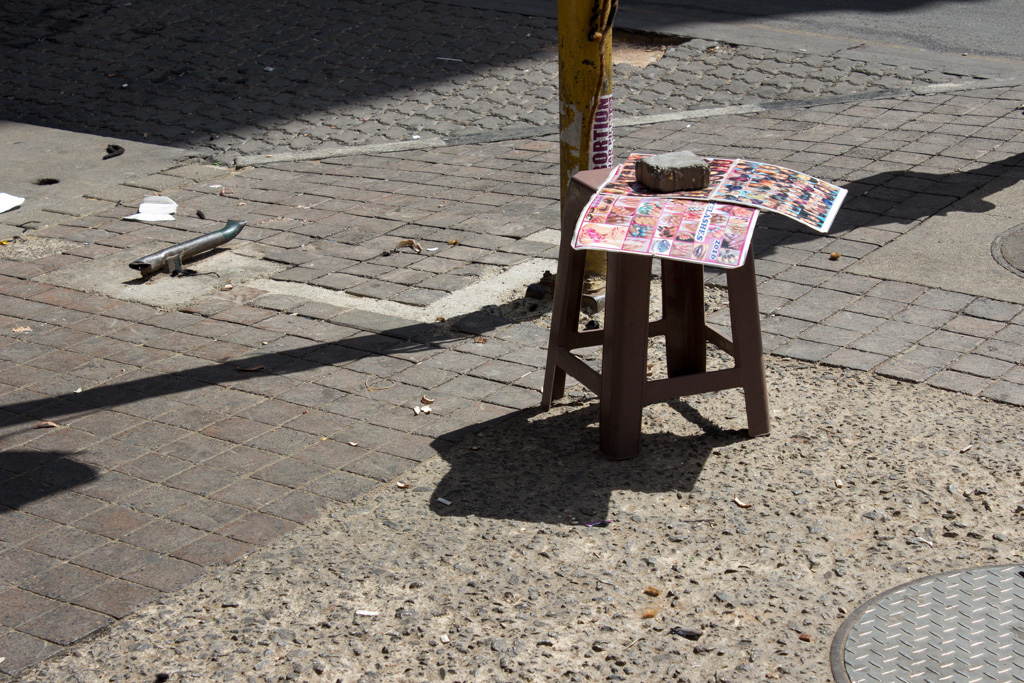Woza Sisi is an exhibition that explores the ways in which women hairstylists working in Joburg CBD and Maputo manoeuvring through their days, as well as their strategic use of urban spaces. I caught up with photographer Dahlia Maubane to find out more about the project.
What exactly inspired the ‘Woza Sisi’ project?
I lived in Johannesburg CBD, and was fascinated by the influx of women doing hair. I was captivated by their idea of the mobile studio, comprising of a stool and a display board. I wanted to explore how they negotiate and navigate the space, those intersections and pavements in a busy town. There are so many street hairstylists everywhere, some in cliques of the same ethnicity. At first, it seemed interesting to investigate whether the hairstyles would differ in technique according to the hairstylist’s background or not as time progressed, I got interested in sharing their experiences as working mothers, breadwinners and wives. Also, one cannot miss their persuasive calling – Woza sisi, woza nice.
The project ‘Woza Sisi’ has been an ongoing body of work since 2012, what has the process been like from then till now?
Woza Sisi is an on-going body of work that explores women working as street hairstylists. I have been exploring how these women shape and navigate urban spaces, how they exist in these environments. I have produced four chapters of the project, looking at different spaces across Johannesburg, Mahikeng and Maputo.
Throughout the years I have noticed how things have shifted, buildings have been developed, technology playing a role by making the process of attaining customers more convenient and also it has become more difficult to engage with the women because they want to be remunerated.
I went back and photographed Johannesburg CBD and explored a bit of Maputo, the first time going across-boarder. This was the fourth segment of Woza Sisi, through the support of the Market Photo Workshop Alumnus Award.
Through the critique sessions, I was told by my mentors to loosen up and experiment more. I have been photographing environmental portraits of the women street hairstylists, being conscious of who my subject is, and briefly understand her relationship with her surroundings. This time around I used a 4-way action sampler, a camera that develops a series of 4 images in one moment using 34mm film. The camera is compact, and enabled me to be invisible and steal moments in the vibrant cityscape. This is the only chapter where I didn’t interact with the women.
Lastly, I have showcased the work in open-air exhibitions in proximity to where the women operate. It felt good introducing photography as visual language to the general public, seeing people read images and also become critical to what they are looking at. During these activations I would hand over customized business cards and t-shirts to the women that have participated, as a token of gratitude. This depends on funding. I want to empower them, and help them realise that branding is also important when building a business. I have also produced two editions of Woza Sisi zines.

Most of the work was photographed in central town, Johannesburg. How do you approach your subjects?
It’s always a thrilling experience going out to go photograph. I have to mentally condition myself before, visualize the type of images I would like to capture. I am also quite shy, so approaching a potential subject is not the easiest.
At first, I would identify which women I would like to photograph, mostly determined by their character, or their surroundings – which visual elements stand out in that instance. It was much easier when I introduced myself as a photography student wanting to document women street hairstylists, because they wouldn’t want any payment. Nevertheless, I have now collected years of visual reference, so I can show them the type of work I have done previously. Its also a challenge explaining myself, the language barrier played a role. The trick is to have one woman agree and buy into the idea, the rest will definitely follow, plus I printed out their images and gave them without a fee.
As a photographer, do you find it difficult to detach yourself from a project upon completion?
It’s not the easiest thing to detach myself from a project, unless it’s commissioned work. All of my personal projects are ongoing. Although, I have not worked on them for years, I know I can go back and continue where I left off.
Through most of your work, what would your main intention be?
The main themes I explore are around the displaced, bringing visibility and interrogating stereotypes experienced by women. So, from women soccer players, who experience gender inequality, not given the same opportunities compared to men, foreign traders in small townships, who had to settle in our country because of political disputes or seeking greener pastures, to migrant street hairstylists negotiating spaces in the city of Johannesburg.

What influences your work as a whole?
As a woman in photography, I am interested in story-making and exploring issues around women, trying to be an advocate for their daily encounters. Be it, migrant women trading in busy Joburg CBD, interrogating concepts around strangeness and foreignness, how people come to function themselves in new or different spaces.
What challenges have you faced throughout your career as a practicing photographer?
The photography field is quite small, and we have witnessed how digital SLR cameras have become more accessible, and photography training is no longer a requirement when looking at commissioned work.
Working as a commercial photographer, in my opinion, now depends on how much influence you have on social media. Some clients now feel they can negotiate lesser payments because “there is someone who will do the job less than the industry rates”.
Also, I am yet to see photography appreciated as an art form, and have art buyers bring audiences to invest in the prints. It’s a challenge to work as an exhibiting photographer, producing work through the guidance of an art gallery in South Africa in my opinion.























































